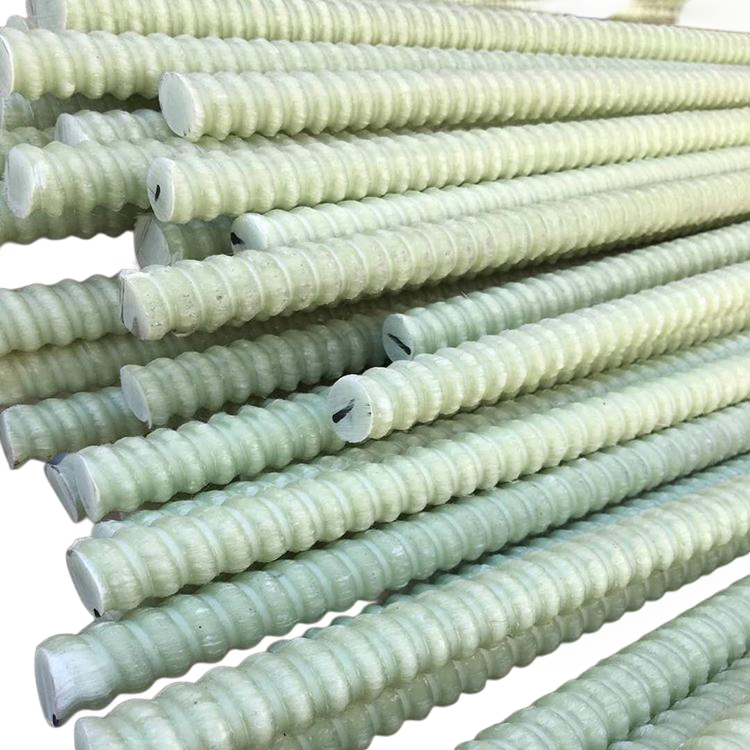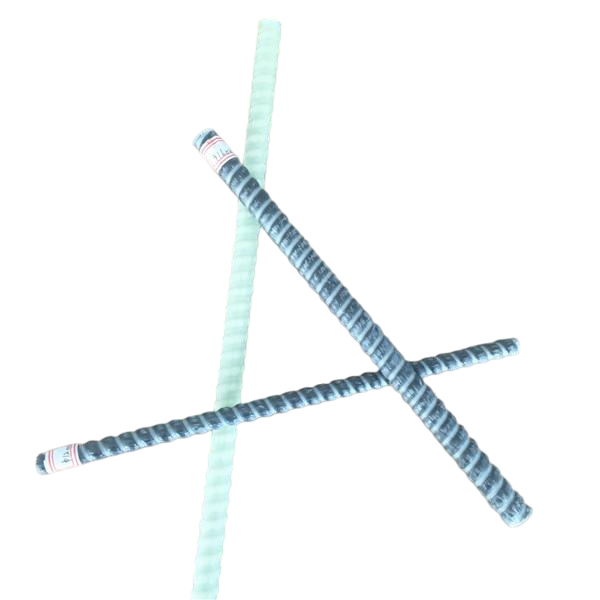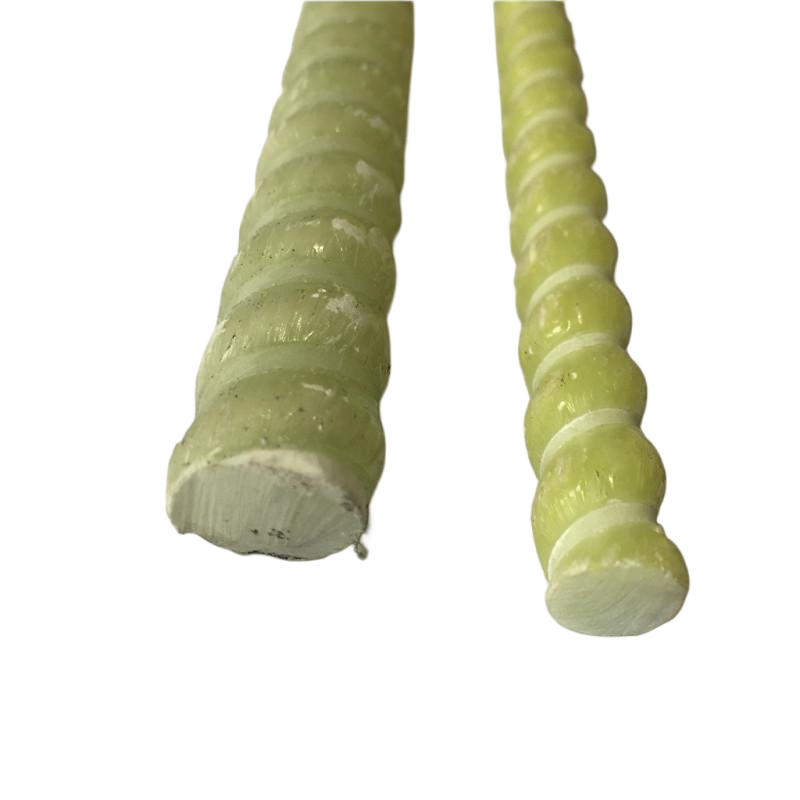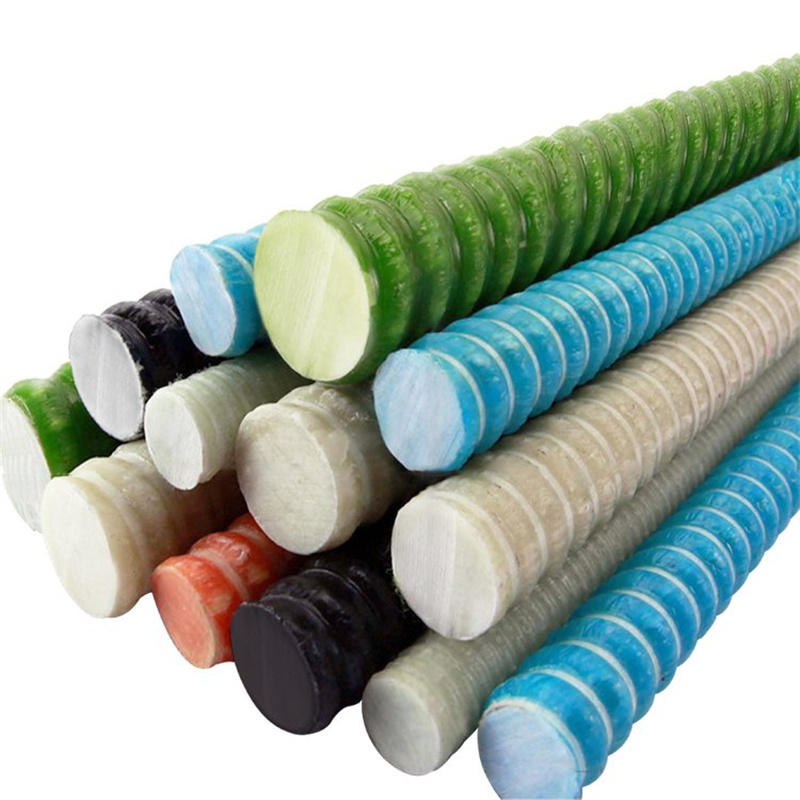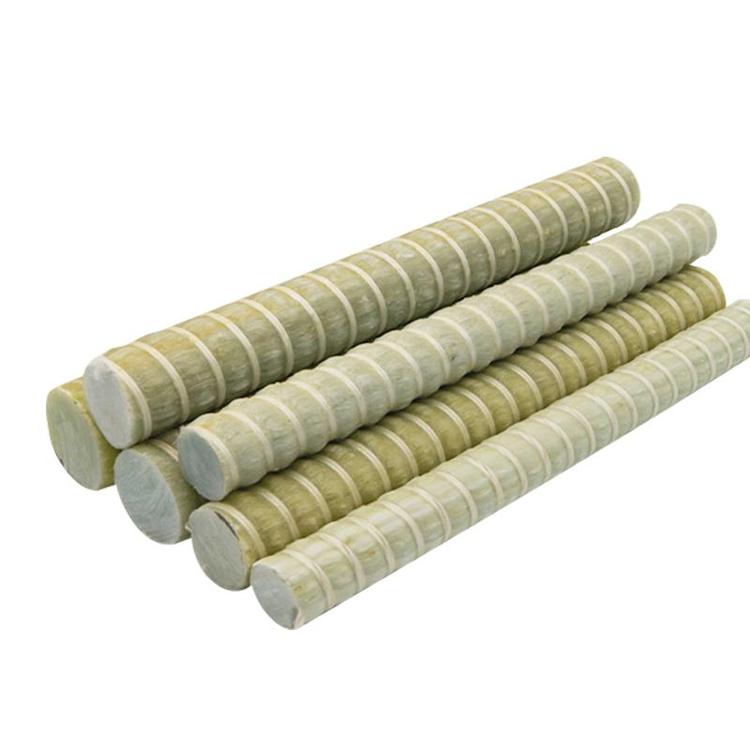The compressive performance of fiberglass reinforcement is easily affected by the aspect ratio, and the critical conditions for crushing failure and splitting failure are closely related to material properties and stress distribution. The following is a specific analysis:
1、 The influence mechanism of aspect ratio on compressive performance
The aspect ratio (λ, defined as the ratio of the effective length of a component to the minimum radius of rotation of its cross-section) is a key influencing factor on the compressive performance of fiberglass reinforcement, and its mechanism of action is as follows:
Instability effect dominant
Euler buckling critical stress: As the aspect ratio increases, the Euler buckling critical stress (σ _cr=π ² E/(λ ²)) sharply decreases. For example, when λ increases from 40 to 80, σ _cr decreases from about 125 MPa to 31 MPa (assuming E=40 GPa), which is much lower than the compressive strength of glass fiber (usually 300-500 MPa).
Mode change of failure: Short bars (λ<50) mainly experience crushing failure, while long bars (λ>80) undergo buckling failure due to instability. The actual bearing capacity is only 10% -30% of the material's compressive strength.
Non uniformity of stress distribution
End constraint effect: Under axial compression, stress concentration occurs in the end constraint area of the long reinforcement, and the transverse expansion of the middle area is hindered due to Poisson's effect, forming a non-uniform stress field.
Fiber fracture gradient: Fiber fracture in long bars extends from the end to the middle, and the distance between fracture surfaces decreases with increasing λ, resulting in a stepped decrease in bearing capacity.
Material anisotropy amplification
Weak lateral performance: The lateral shear strength of fiberglass reinforcement (about 30-50 MPa) is only 1/10 of the axial compressive strength. As the aspect ratio increases, the contradiction between the lateral constraint requirements and material properties intensifies.
Interface debonding acceleration: The interface debonding between fibers and matrix in long bars expands from local to overall, reducing the overall compressive stiffness.
2、 Critical conditions for crushing and splitting failure
1. Crushing Failure
Trigger mechanism: It occurs when the axial compressive stress exceeds the microstructural bearing limit of the glass fiber.
Critical condition:
Stress state: σ _ axial ≥ σ _ compressive strain (300-500 MPa).
Destructive features: Fiber bundle crushing, matrix fragmentation, with a 45 ° shear slip plane in cross-section, accompanied by intense noise.
Slenderness ratio limitation: usually occurs in short bars with λ<50, where the instability effect can be ignored.
2. Splitting Failure
Trigger mechanism: It occurs when the lateral tensile stress exceeds the fiber matrix interface bonding strength or material tensile strength.
Critical condition:
Stress state: σ _transverse ≥ σ _tensile_strend (50-100 MPa) or τ _interface ≥ τ _ond_strend (10-20 MPa).
Damage characteristics: Multiple parallel cracks are generated along the axial direction, with a "comb like" cross-section and accompanied by matrix peeling.
Sensitivity zone of aspect ratio: When 50<λ<80, the probability of splitting failure significantly increases due to the coupling effect of instability and lateral constraints.
3、 Criteria for identifying destructive modes
Based on the aspect ratio λ and material performance parameters, failure mode discrimination criteria can be established:
Criteria for identifying destructive modes
Crushing and destruction of λ ≤ λ _cr1 (approximately 50) and σ _ axial ≥ σ _compressive_strend
Splitting failure: λ _cr1<λ ≤λ _cr2 (about 80) and σ _transverse ≥ σ _tensile_strend or τ _interface ≥ τ _ond_strend
Buckling failure λ>λ _cr2 and σ _ axial<σ _cr (Euler critical stress)
4、 Engineering application suggestions
Short reinforcement design (λ ≤ 50):
Key control of material compressive strength, using high modulus resin matrix (E ≥ 50 GPa) to enhance anti instability ability.
Recommend a cross-sectional diameter of ≥ 20 mm to avoid local crushing.
Medium length reinforcement design (50<λ≤ 80):
Both compressive strength and lateral restraint performance need to be verified simultaneously. It is recommended to use carbon fiber winding reinforcement or surface sandblasting treatment.
The minimum protective layer thickness is ≥ 2.5 times the diameter of the reinforcement material to prevent splitting and expansion.
Long reinforcement design (λ>80):
Stability verification must be conducted, or a composite structure of steel pipe constrained fiberglass reinforcement must be used.
Limit the aspect ratio to λ ≤ 100 to avoid Euler buckling dominant failure.
5、 Research Frontiers
Multiscale simulation: Using a molecular dynamics finite element coupling model, reveal the competitive mechanism between fiber fracture and interfacial debonding.
Intelligent monitoring: Develop a strain monitoring system based on fiber Bragg gratings to provide real-time warning of early signs of splitting and damage.
New matrix material: Developed a self-healing resin matrix that releases healing agents through microcapsules to delay crack propagation.
The compressive performance design of fiberglass reinforcement needs to comprehensively consider the aspect ratio, material anisotropy, and coupling effects of failure modes. Through refined analysis and innovative design, its application potential in high demand scenarios such as marine engineering and seismic structures can be significantly expanded.





















